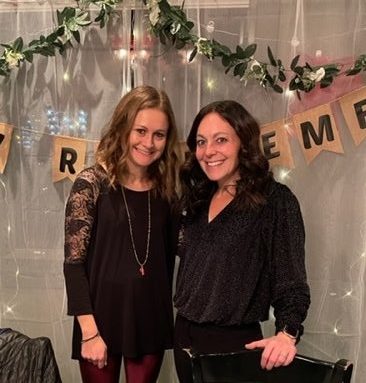Augmentative and Alternative Communication (AAC): A key to unlocking a child’s autonomous thoughts
Seasoned P.G. Chambers School speech therapists Dana Hall, CCC-SLP and Je nnifer Jacobs, CCC-SLP have been supporting P.G Chambers School students with complex communication needs for more than 14 years. Dana and Jen are graduates of Penn State University with a passion for communication. Together they have lead numerous trainings nationally and have been called upon by local universities to train the next generation of therapists on topics related to Augmentative and Alternative Communication. Recently, Jen and Dana took some time to share their expertise about AAC.
nnifer Jacobs, CCC-SLP have been supporting P.G Chambers School students with complex communication needs for more than 14 years. Dana and Jen are graduates of Penn State University with a passion for communication. Together they have lead numerous trainings nationally and have been called upon by local universities to train the next generation of therapists on topics related to Augmentative and Alternative Communication. Recently, Jen and Dana took some time to share their expertise about AAC.
What is AAC? AAC stands for Augmentative and Alternative Communication. AAC is an area of clinical practice that supplements or compensates for impairments in speech-language production and/or comprehension, including spoken and written modes of communication. Examples of AAC include: gestures, facial expression, body language, picture boards, applications on iPads, switches, or computer generated speech.
How do you decide which type of AAC is most appropriate for a student? We believe there are no prerequisite skills to begin using AAC. Our goal is to work with the student and collaborate with teachers, therapists, and families to provide tools for that child’s communication toolbox and build over time. Important factors considered when selecting the tools may include: vision, physical positioning, motor coordination and control of different body parts. We recognize potential, working with each student to develop the skills and improve access as we go. The tools may change over time but our goal remains the same, to help our students share their autonomous thoughts.
What are some strategies for helping students learn to use aided AAC? An important factor in helping a student learn to use aided AAC is exposure. Having the device available and accessible throughout the day is critical. The people surrounding the AAC user are called communication partners. These partners can model AAC use for the student without expecting your student to imitate or use their AAC in that moment. It’s important to consistently respond to any AAC use by your student, connect authentically with them, and model while you do. Don’t worry about doing it right, the more you do it the better you’ll get. Invite participation but don’t make it feel like work and trust the process.
How do you facilitate collaboration and consistency across a student’s team? Providing training to all of the student’s team members helps to ensure that everyone is following the same process when working with the AAC system. Team members may include teachers, therapists, paraprofessionals, nurses, family members, friends, etc. Remember AAC is about building communication and connection. AAC is not the activity, but to be used for conversation around an activity. Use it to talk to your student while you do something together.
Are there any resources that you would recommend for further information?
The AAC Coach @the.acc.coach
AAC Nerds @aacnerds
AAC Chicks @aacchicks
Websites
https://www.assistiveware.com/
Facebook group
AAC Through Motivate, Model, Move Out Of The Way
Podcasts